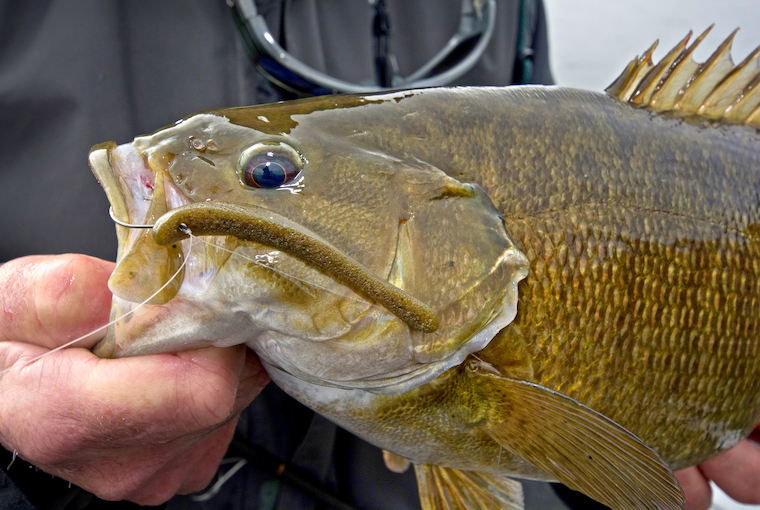
Few species test an angler’s skills like smallmouth bass, especially big ones swimming in heavily fished waters. Chinwag with smallmouth specialists and you can bet your favourite soft plastic they’ll tell you bass become conditioned to angling pressure. Overhead sonars pinging and trolling motors whining will shut down savvy smallmouth fast, even in deep water. Plus, older, bigger bronzebacks that have been caught and released may also get accustomed to certain baits, which is why the pros are constantly tweaking tactics to find new, reliable presentations.
What follows are some of the most up-to-date presentations for mid- to deep-water smallmouth used by several Ontario experts.
Run high over deep water
Ottawa-based Renegade Bass Tour Classic champion Paul Shibata believes trophy smallmouth, the kind needed to win tournaments, are the savviest bass in a population.
“You have to come up with a better mousetrap to catch them and bring your A Game,” Shibata said, speaking of his home waters of eastern Lake Ontario and the St. Lawrence River. Shibata’s strategy begins with speedily working crankbaits and jerkbaits. Despite only diving three to eight feet, he confidently casts them over deep water. Here’s why:
“When I’m choosing a presentation for wary smallmouth, I err on the high side,” Shibata said. “Smallmouth bass, especially in open-water, are pelagic and feed on schools of baitfish. It’s easier from a visual acuity standpoint for them to be below baitfish. … When smallmouth are roaming, you want to be making your presentation above them, because whatever colour you use will cast a shadow against a bright sky. Based on this premise, I use things that don’t run that deep.”
The Yo-Zuri 3DB Square-Lip is one of his go-to cranks and proved invaluable last season on Lake Ontario. Shibata found smallmouth relating to a 12-foot shoal. The fish weren’t on the shoal, but rather adjacent to it, suspended at 12 feet in 40 feet of water. The Square-Lip’s three- to five-foot running depth kept it above up feeding bass and in their strike zone.
When smallmouth suspend further down, Shibata switches to a mid-crank. Since a banner day on Lake Ontario last season, he has taken to calling this lure his “underwater topwater.” “It’s got lots of vibration and commotion,” Shibata said. “It was only going down about eight feet, which was much higher than my Lowrance was showing fish to be, but the smallmouth were coming up and clobbering it, just like they do with a topwater. Really angry, aggressive strikes.”
Of course, smallmouth can be choosy. Sometimes they can’t get enough of the steady trajectory and loud vibration of a crankbait, while other times a fast, erratic jerkbait is what they want.
When it comes to jerkbaits, Shibata likes the Hardcore Minnow Flat 95SP and 110SP. In either length, the bait’s magnetic weight transfer system delivers long casts, even in high winds.
“I’m big on clear finishes, like Ghost Pro Blue,” Shibata said. “I find when smallmouth are a little bit more guarded, subtle is better.”
Shibata and I also spoke about the effectiveness of shad hard baits. They’re versatile and can be fished like a crankbait or ripped erratically like a jerkbait. On water systems where bass see a lot of slender minnow-profile jerkbaits, compact shad baits are deadly, something I’ve observed on the St. Lawrence River and lakes within the Ottawa Valley.
Unlike crankbaits, Shibata’s jerk-bait retrieve centres on unpredictability. Twitch-twitch-pause, twitch-pause, and so on. The warmer the water, the faster the tempo and shorter the pauses ,taunting smallmouth to try and catch the erratic ripbait.
Shibata finds water clarity and light penetration can be factors influencing small-mouth bait preferences. As such, he begins with a crank-bait in coloured water or on dark, cloudy days. In clearwater and bright conditions, he starts with a jerkbait.
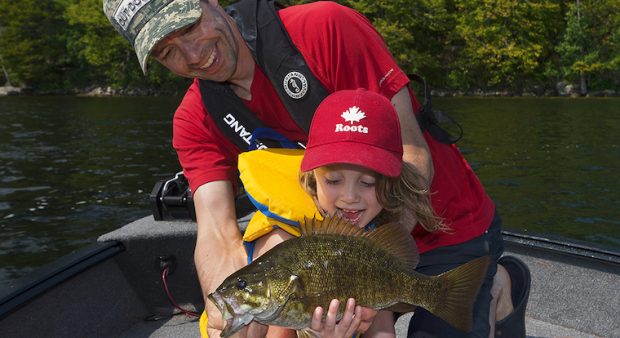
Paint lines with small swimmers
Widely acknowledged as one of Canada’s best dropshot anglers, Derek Strub of Elora, says vertical tactics don’t guarantee success when facing pressured smallmouth during an off-peak bite. When a drop-shot’s effectiveness wanes, he’s found casting a 2.8″ Jackall Rhythm Wave swimbait on a 1⁄4- ounce jig can be a better option. At the very least, it helps put a few more fish in the boat.
“Smallmouth know boats, there’s no doubt about that,” Strub said. “When the pressure mounts on spots due to boats, I’ll fish my bait away from boats, making long casts.”
The retrieve is slow and steady. Strub often counts down the bait and swims it anywhere from five to 10 feet above bottom.
While Strub acknowledges smallmouth feed heavily on floor-living gobies on the Great Lakes and Simcoe, he, like Shibata, recognizes smallmouth are predisposed to feed up. This is when a swimbait is deadly.
“You always see smallmouth tracking shiners and stuff, even with so much food underneath them,” Strub said. “I wonder, too, if they get tired of banging their faces in the rocks and zebra mussels for gobies. When opportunities arise, I think they’re keen on eating emeralds and other baitfish.”
Strub fishes swimbaits on seven-foot medium-power spinning rods, outfitted with reels spooled with five-pound braid, tied to an eight-foot leader of six- to eight-pound test fluorocarbon. The braid has a smaller diameter than one-pound mono, which helps fling the bait far. The braid’s minimal water resistance also helps the bait to sink fast to 25 to 40 feet and stay in the zone during the retrieve.
When it comes to boat position and where he casts a bait, Strub is meticulous. He begins by using a side-imaging fish finder to identify key transitions in structure where smallmouth stack up. These typically include changes from rock to sand, small rock to large rock, sand to weed, hard to soft bottom, and so on. He saves these edges as waypoints, which allows him to creep up within casting distance without alerting fish.
“I back off my waypoints, Spot-Lock, and use 360 Imaging to see ahead and the angle I want to cast,” Strub said. “When I’m fishing deep, especially transition lines, I have a huge advantage over those without 360… in the morning you may catch smallmouth 10 feet on either side of the transition, but when the feeding blitz dies, they’ll sit right on the transition and I’m able to cast right at it. I call it ‘painting lines.’ You need to be where the fish are.”
Shibata noted his new real-time sonar finder will be a game changer this season, helping to cast and retrieve a bait “on the nose” of smallmouth he can see on his high-definition, live screen units. Similarly, Chris Johnston and other pros use live-scanning sonar to target specific fish and finesse them to eat.
Drop on bottom huggers
If the preceding “Painted lines” section made you think Strub was going to stay silent on drop-shotting, sorry to mislead you. He still finds the tactic is potent for pressured smallmouth, provided anglers don’t become too attached to specific baits or presentation styles.
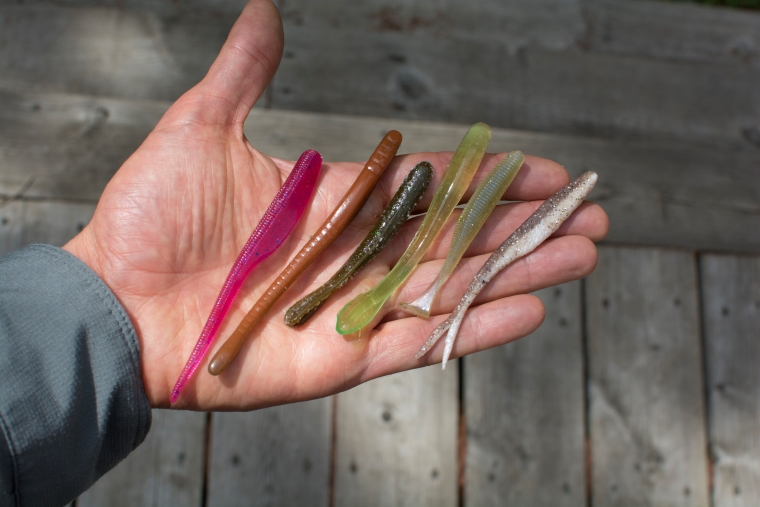
Strub likes casting a drop-shot to get his bait away from other boats, and he’s not above dragging a drop-shot on a long line.
“My biggest thing is to switch, switch, switch,” he said. “I will literally grab 15 different baits, set them on my boat, and cycle through them on every other drop. Very often this adds a fish on a bait that’s not in my normal repertoire.”
Baits scattered on his deck will include a goby imitator, a minnow copycat, and, to borrow from Monty Python, “something completely different,” like a creature bait, or a worm. Anything is fair game if he thinks bass might eat it. Rotating bait colours is also important, he says.
Competitive angler Alicia Raytrowsky of London also likes the drop shot. She and her angling partner, Mark Biesinger, were fishing in a Forest City Bassmasters event on Lake Erie on a cool, windy, cloudy September day. As co-anglers in a small aluminum boat, the pair were limited to where they could fish, given the craft’s constraints in the rough water.
Raytrowsky suggested they try a shoal topping out at 12 feet with a base around 30 feet.
“This is a known area, where generally you can catch an easy five-fish limit in the morning,”Raytrowsky said. “We noticed, when we reached the area, that other boats around us were not bringing in many, if any fish. … Since I figured the fish were being reluctant to bite with the cooler weather, I suggested we try a drop-shot to see if we could get some to commit.”
And commit they did. The pair ended up with 19.82 pounds as a result of drifting the shoal. This was enough to grab a first-place finish within their club and second overall in the tournament. Raytrowsky nose-hooked a 4-inch MaxScent Flatnose Minnow in Brown Back to a size 1/0 drop-shot hook tied to a 6-foot leader of 8-pound fluorocarbon tied to 15-pound braid. This was fished with a six-foot, nine-inch medium spinning rod paired with a spinning reel.
“While drifting, I slowly bounced my pencil weight off the shoal and this added a little action to my bait, and it also helped prevent any snags along the way,” Raytrowsky said. “One thing to keep in mind is that when smallmouth get reluctant to bite, the height of your drop-shot bait can have a big impact. You want that bait either in front or just above the bass if they are on the bottom or suspended. This can trigger them to bite. Sometimes it’s just a reaction bite as the bait hits their nose.”
The smell of success
Let’s consider another factor: scent. Anglers who ignore fish attractants aren’t doing themselves any favours when it comes to tricking big bronzebacks. And, if you’ve been following the bass scene, you’ve likely heard of recent tournament victories involving scented baits. Raytrowsky says using scent has helped her on many occasions, including the Forest City Bassmasters event.

Getting jiggy
Raytrowsky also uses thin finesse baits on jigs for fussy smallmouth. Reliable picks include a 3.6-inch flat soft-plastic worm or a 4.5-inch worm rigged on a half head jig. She fishes these on a seven-foot medium-power rod and spinning reel spooled with 30-pound braid and a 12-pound fluorocarbon leader. She will either vertically jig the bait along bottom or cast, then slowly drag it back, adding hops to stir up silt to attract bass.
Dainty soft baits have a long track record of bringing big but hesitant bronzebacks into my boat as well. These include jig worms, minnows, small tubes, grubs, creatures, and natural-coloured bucktail jigs in the 2.5-inch to 3.5-inch range. A laid-back, crawl, drag, pause, and the odd hop-here-or-there retrieve will get lock-jawed bass to open up.
Then there’s a little trick I call “spacewalking.” The nuts and bolts of this approach are a light jig rigged with a small plastic, cast over mid-to-deep water when smallmouth are suspending. Then, like a tethered astronaut slowly floating in zero-gravity, the jig is lazily swum and drifted anywhere from just off bottom to a few feet beneath the surface.
I reserve this approach for key areas because it’s so slow, but it’s great when you mark fish around shoals, reefs, islands, and points. More, on lakes where smallmouth like to sunbathe and forage in shallow water, spacewalking the adjacent drops and mid-depth flats will catch big bass that have left the shallows due to boat traffic, angling pressure, or other reasons.
Give these tactics a try when faced with persnickety smallmouth, and remember to keep an open mind. Even the most reliable presentations can have lulls as big bass get conditioned to popular tactics.
Originally published in the July 2019 edition of Ontario OUT of DOORS magazine


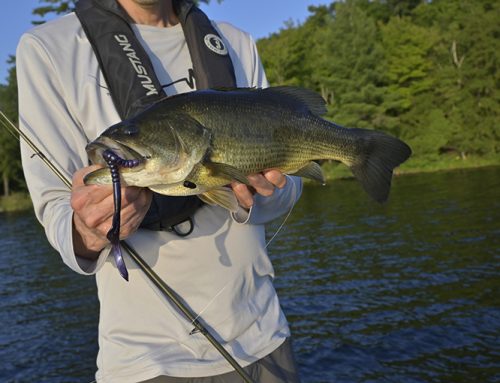
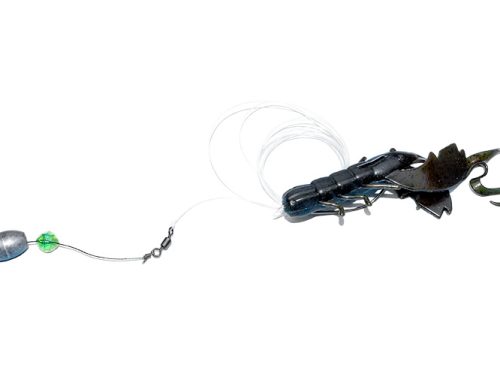
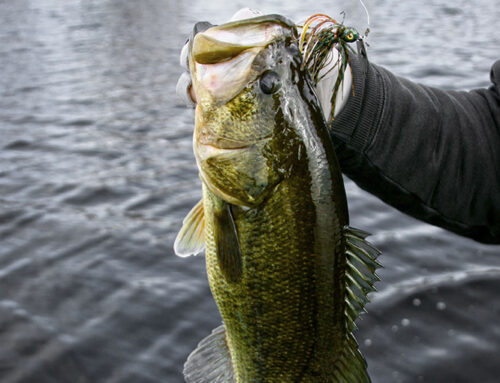
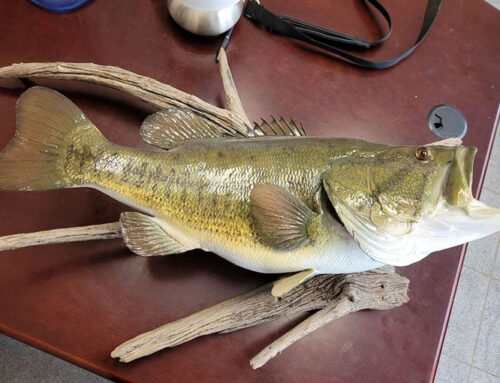
Leave A Comment